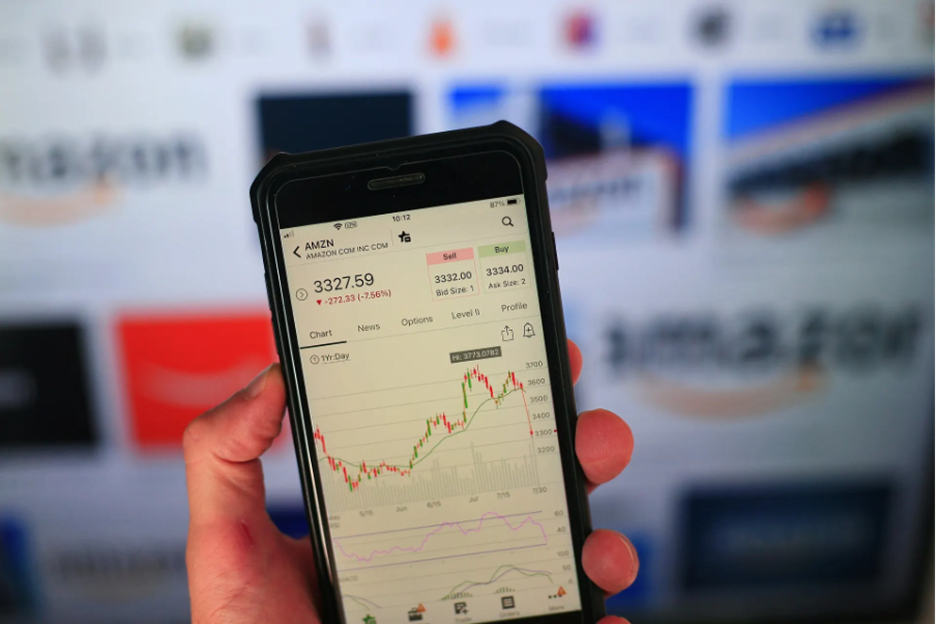In today’s digital age, smartphones have become an integral part of our lives, transforming the way we communicate, access information, and conduct business. One of the significant developments in the financial industry is the rise of app-based investment platforms, which have empowered individuals to participate in the world of trading and investing directly from their smartphones. Just as Niger, Mali, and Burkina Faso’s recent announcement of withdrawal from ECOWAS (Economic Community of West African States) marks a significant geopolitical development, the emergence of the best trading apps represents a pivotal moment in the world of finance. This article explores the phenomenon of smartphone trading, highlighting its advantages, the best trading apps available, and its impact on the investment landscape.
The Era of Smartphone Trading
Smartphone trading refers to the practice of buying and selling financial assets, such as stocks, bonds, cryptocurrencies, and commodities, using mobile applications or apps on smartphones and tablets. This trend has gained significant momentum for several reasons:
- Accessibility: Nearly everyone owns a smartphone, making trading and investing accessible to a broader demographic. Individuals no longer need access to a desktop computer or a traditional brokerage office to participate in the financial markets.
- Convenience: Smartphone trading allows investors to trade on the go. Whether you’re at home, commuting, or traveling, all you need is an internet connection to access your investment portfolio and execute trades.
- Real-Time Information: The best trading apps provide real-time market data, news updates, and financial information, empowering traders to make informed decisions based on the latest developments.
- User-Friendly Interfaces: Most trading apps are designed with user-friendly interfaces, making them accessible to individuals with varying levels of trading experience. Intuitive navigation and features enhance the trading experience.
Emerging Trends in Mobile Trading
The proliferation of trading apps has led to a diverse array of options for investors. However, it’s essential to stay informed about the latest trends in mobile trading that are shaping the future of the industry:
- Cryptocurrency Integration: Many trading apps are now integrating cryptocurrencies into their offerings. This trend reflects the growing popularity of digital currencies and provides traders with access to a new asset class.
- Robo-Advisors: Some trading apps are incorporating robo-advisors, which use algorithms to provide automated investment advice and portfolio management. This trend is making investing more accessible and affordable.
- Social Trading Networks: Building on the concept of social media, some trading apps are creating social trading networks where users can share strategies, follow successful traders, and even copy their trades. This trend fosters a sense of community among traders.
- AI and Machine Learning: Trading apps are increasingly using artificial intelligence (AI) and machine learning algorithms to provide personalized recommendations, analyze market data, and enhance trading strategies.
- Fractional Share Trading: To make investing more accessible, many apps now offer fractional share trading, allowing users to buy a portion of a high-priced stock or ETF, making it affordable for investors with limited capital.
These emerging trends are reshaping the landscape of mobile trading and offer traders exciting new opportunities to explore and diversify their portfolios.
The Impact on Investment Landscape
The rise of smartphone trading has had a profound impact on the investment landscape:
- Democratization of Investing: Smartphone trading has democratized investing, allowing individuals with limited capital to participate in the financial markets. Fractional share trading enables investors to buy a portion of expensive stocks.
- Increased Market Participation: The accessibility and convenience of trading apps have led to increased market participation. More people are investing in stocks, cryptocurrencies, and other assets.
- Market Liquidity: Smartphone trading has contributed to increased market liquidity, with more traders actively buying and selling assets. This liquidity can lead to tighter spreads and better pricing for investors.
- Educational Resources: Many trading apps provide educational resources, market analysis, and research, helping users make informed decisions and develop their trading skills.
Challenges and Considerations
While smartphone trading offers numerous benefits, investors should also be aware of potential challenges and considerations:
- Risk Management: The ease of trading on a smartphone can lead to impulsive decisions. It’s essential for investors to implement sound risk management practices and avoid overtrading.
- Security: Security is a paramount concern when trading on mobile apps. Users should choose reputable brokerage firms and enable security features like two-factor authentication.
- Screen Size: The smaller screen size of smartphones may limit the amount of information visible at once. Some traders may prefer larger screens for in-depth analysis.
Conclusion
Smartphone trading represents a transformative shift in the world of finance, making investing and trading more accessible and convenient than ever before. As Niger, Mali, and Burkina Faso announce their withdrawal from ECOWAS, reshaping the geopolitical landscape, the emergence of the best trading apps is reshaping the investment landscape. These apps empower individuals to take control of their financial futures, providing real-time information, user-friendly interfaces, and a wide range of investment options. While smartphone trading offers numerous advantages, investors should approach it with caution, implement risk management strategies, and prioritize security to make the most of this revolutionary trend in finance.













